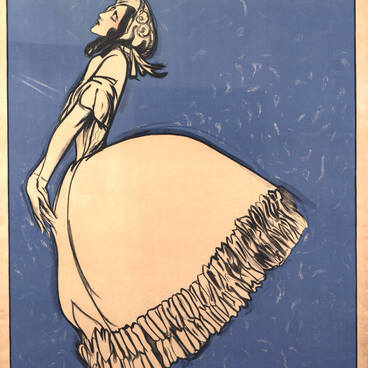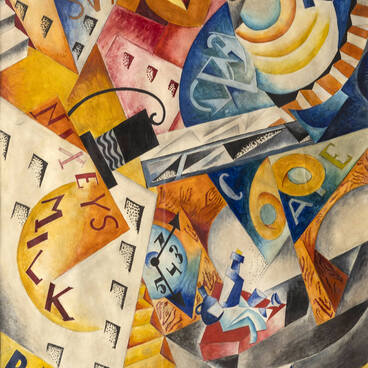The premiere of the play “The Government Inspector” took place at the Theater of the House of Press in the Shuvalov Palace on April 9, 1927. The excitement around the upcoming event was fueled by newspapers and magazines. The play was directed by Igor Terentyev who was already well known in Leningrad: he staged the play called “John Reed” based on the book “Ten Days That Shook the World” at the Red Theater. The scenery and costumes for the premiere of “The Government Inspector” were designed by the students of the artist Pavel Filonov. On the eve of the performance, they placed their paintings in the foyer of the palace, so that the premiere was preceded by an exhibition titled “The Death of Capitalism.”
Pavel Filonov did not contribute to the design of the play, acting only as a mentor for his students, who were deeply immersed in the search for artistic insights. The artist’s student Tatyana Glebova recalled that Filonov was first and foremost an exploring artist and the founder of analytical realism, and that theater was of little interest to him.
Pavel Filonov did not contribute to the design of the play, acting only as a mentor for his students, who were deeply immersed in the search for artistic insights. The artist’s student Tatyana Glebova recalled that Filonov was first and foremost an exploring artist and the founder of analytical realism, and that theater was of little interest to him.






